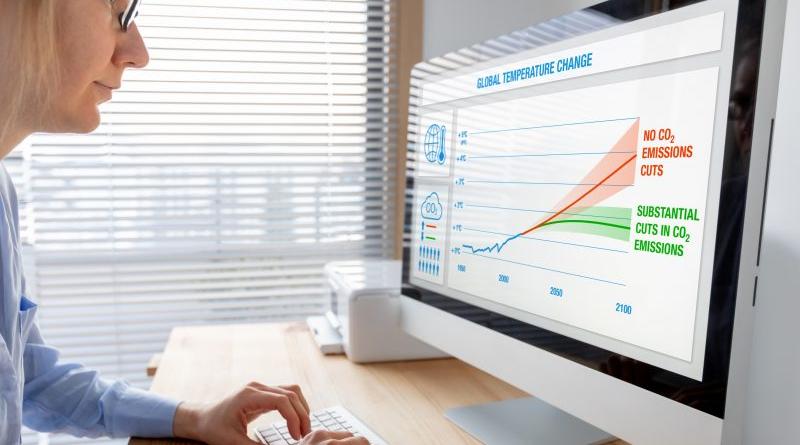The EU needs more accurate modelling tools for its climate policies, as the current information is often not up-to-date and does not reflect the rapid development in green technologies, argue Jens Mattias Clausen and Martin Birk Rasmussen.
The discussion on the EU’s next climate target is about to erupt and the EU’s modelling is in need of an urgent review.
Modelling is the informational bedrock of the EU’s climate and energy policies and needs to be based on up-to-date and transparent technology assumptions, lest we risk overestimating the costs and underestimating the potential of the green transition.
The negotiations of the enormous Fit for 55 package that aims to translate the EU’s 2030 climate target from ambition to practice have entered the endgame, with only a few key policies like the renewable energy and energy efficiency directives still left to be decided.
At the same time, the horrific war in Ukraine has put constant pressure on EU institutions to deliver solutions to the energy crisis.
Nevertheless, talks in the corridors of power are already buzzing around the next big climate battle – the post-2030 climate targets and policies.
The question, however, is whether the upcoming plans that will determine the green credentials of an entire continent until 2040 are based on accurate and up-to-date information.
Spring 2024 deadline for EU’s next climate target
The European Climate Law clearly states that a climate target for 2040 should be proposed within six months of the first global stocktake carried out under the Paris Agreement. The global stocktake will take place in Dubai at COP28 in December this year, effectively instating a hard May 2024 deadline for the European Commission.
Considering the upcoming European Parliament elections and a potentially tough winter next year, there is a compelling argument that at least a plan for a 2040 climate target ought to see the light of day already after summer this year.
Time is in short supply either way, and there is no doubt that the European Commission has already embarked on the comprehensive modelling exercise needed to inform the upcoming proposals.
While this is definitely necessary, there is one big caveat. We are worried that both the ambition level and the policy choices will be negatively affected by the current technology assumptions in the modelling tools used by the European Commission to produce the impact assessments that underpin policy-making in the EU.
Model assumptions are pivotal for climate ambition
The assumptions behind these models are pivotal. They determine model results on optimal deployment of technologies and the associated costs. In turn, this shapes the perception of the feasibility of EU’s climate targets as well as the climate and energy policies to pursue.
Previous analyses on the EU’s energy system modelling (especially the PRIMES model) have revealed data on cost and performance regarding key technologies such as wind, heat pumps, electric boilers, and batteries that do not reflect the rapid and massive developments in these green technologies in the past few years.
Although some assumptions have undergone positive changes (for example more accurate costs for wind and solar technologies), CONCITO has recently uncovered evidence that several of the current technology assumptions are still inaccurate.
For example, the cost of electric boilers is up to 10 times higher than in other and more regularly updated sources. The efficiency assumptions on heat pumps, a key component in the green transition of the heat sector, also seem to be off the mark, while the efficiency of residential gas boilers is too high.
This potentially leads to model results that discourage cost-effective climate solutions and exaggerates the costs of more ambitious climate targets.
Furthermore, there is a lack of transparency in the energy system modelling, which makes public scrutiny a difficult and, in some cases, impossible task. For example, the publicly available data provides a cost assumption for “thermal storage” with no detail regarding the technology assumed or the scale.
There is a risk that the opaque nature of the modelling data is in fact hiding an unknown number of other problematic assumptions. We simply don’t know.
Assumptions need to be urgently updated
Given the high stakes, we recommend an immediate update of the key technology assumptions in the EU’s modelling tools.
Inaccurate and outdated data on cost and performance of a range of technologies should as a minimum be amended before releasing the impact assessments that will inform and shape critical political decision-making on the post-2030 climate targets and policies.
There is a credible argument to be made that the current setup is not fit for purpose. A relatively small number of people in the European Commission and external contractors are responsible for a huge modelling task and more resources are needed.
When transforming the entire European economy for a green future, the resources and manpower must follow suit, and we urge decision-makers in both the Commission and the European Parliament to ensure that sufficient resources are allocated.
If the EU wants to remain at the forefront of the global climate battle, we need to be properly equipped. To fight climate change, first and foremost, but also to remain competitive and relevant.
Modelling provides the very foundation of the political decisions that determine the future EU by defining the parameters of meaningful action, the feasibility of different levels of ambition, and the optimum policy mix.
Accurate and up-to-date technology assumptions are crucial prerequisites in this fight.




